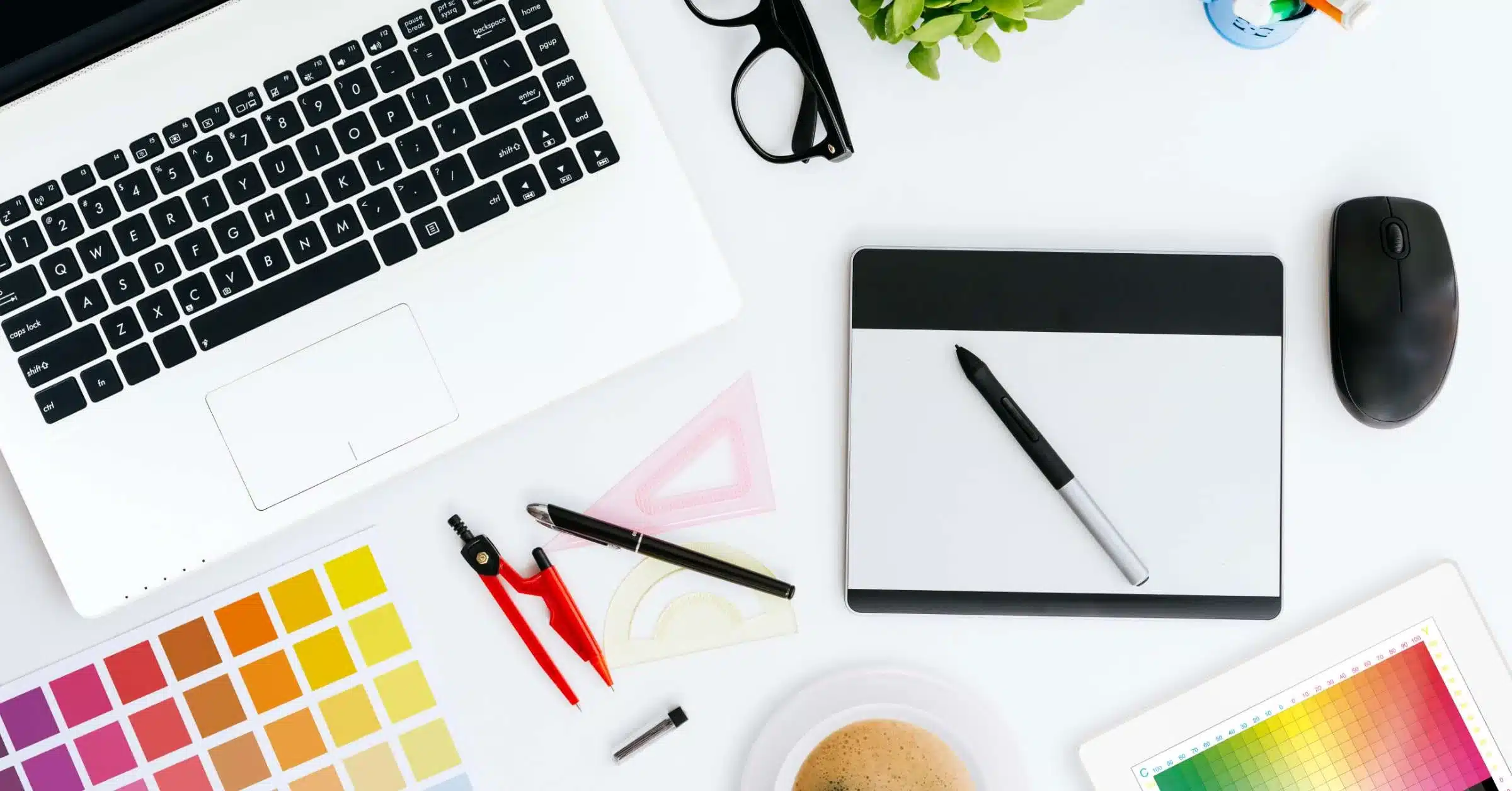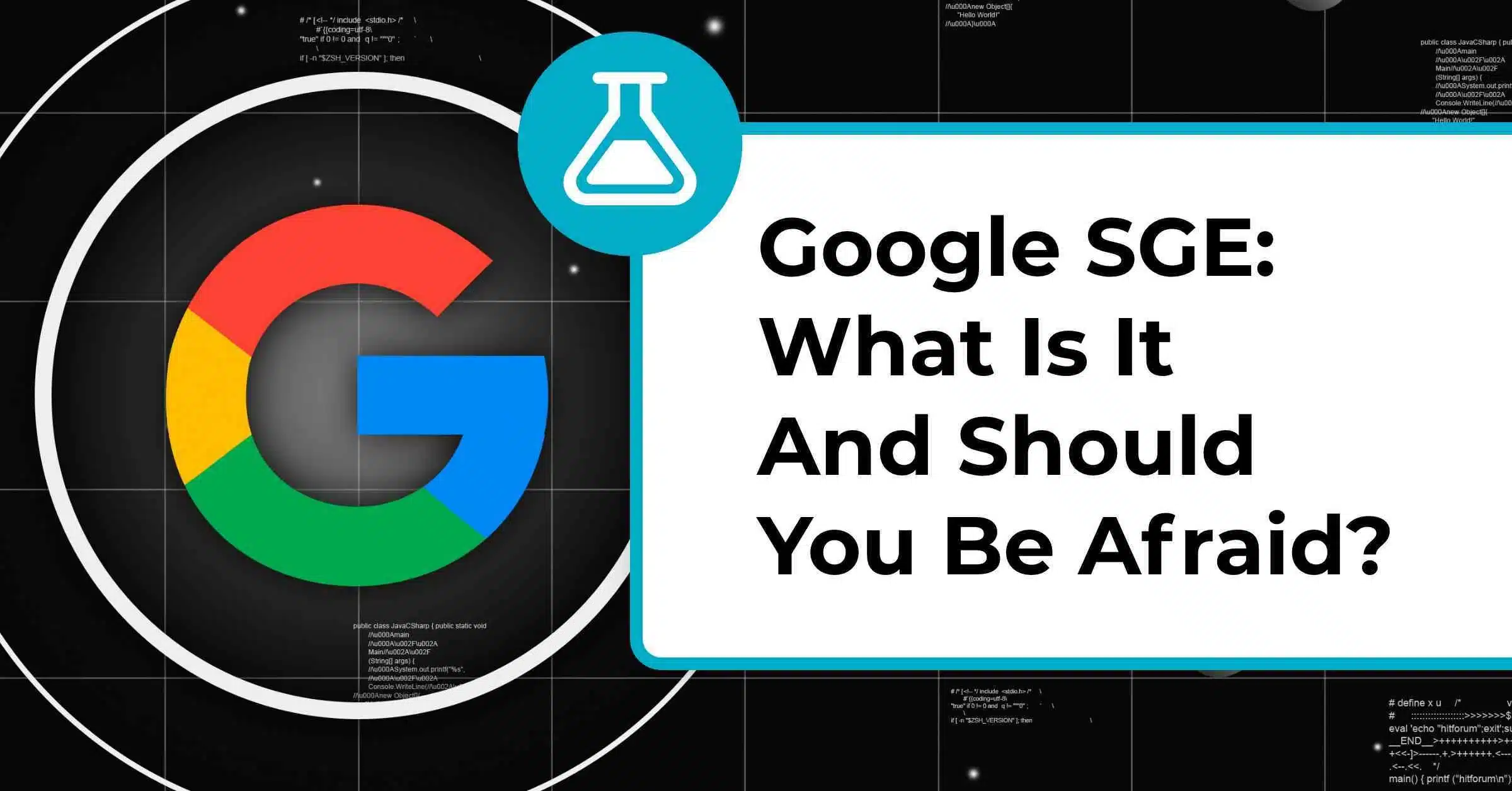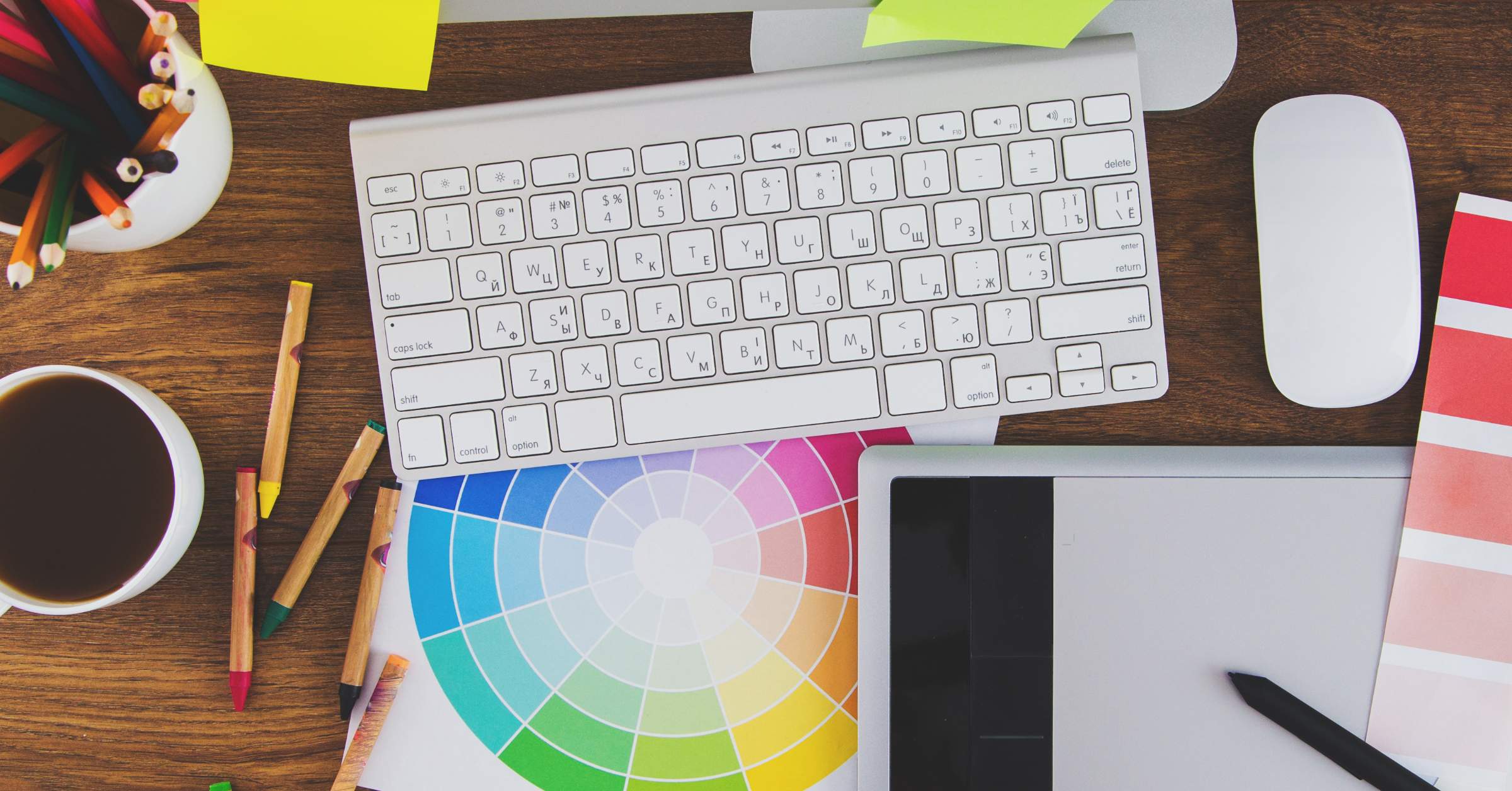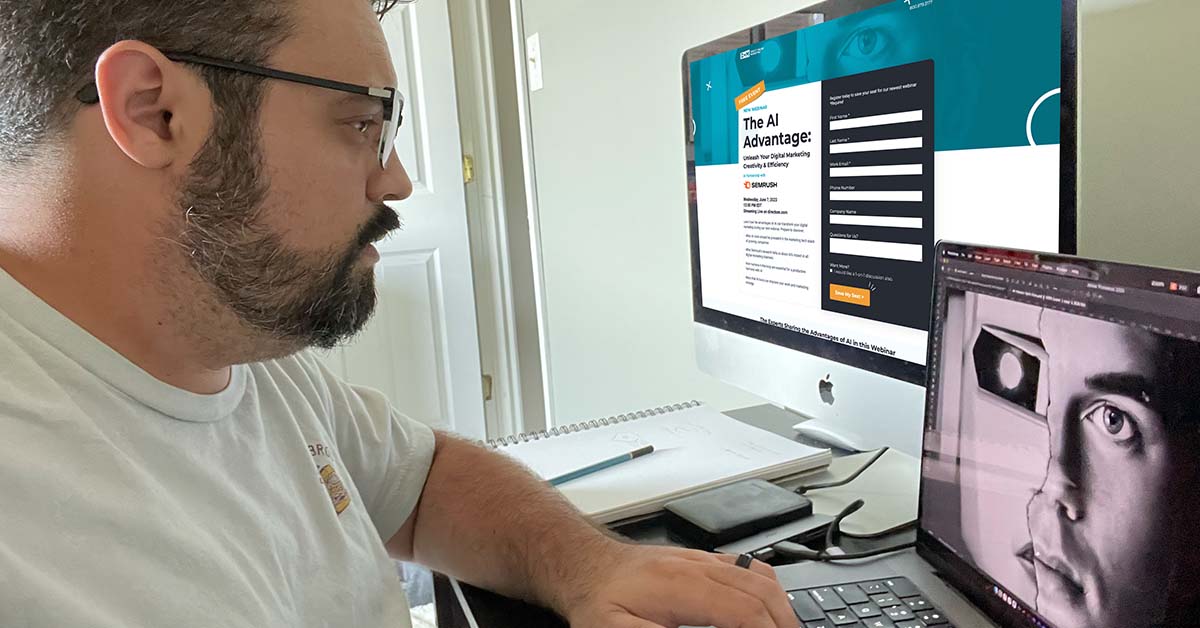
We’ve all heard the age-old adage: don’t judge a book by its cover, but as a designer, I can’t help but disagree with this statement, particularly as the world has evolved in the digital realm.
With a multitude of content readily available at our fingertips, it has become even more important for advertisements to stand out. A high-quality design is vital in order to draw more attention to your call to action.
I flip this adage on its head when strategizing for digital ads, particularly when branding any of our internal campaigns.
Recently I was tasked with designing the creative attached to our webinar, The AI Advantage: Unleash Your Digital Marketing Creativity & Efficiency, and I wanted to take a much more explorative approach than anything we’ve previously produced.
Ready to save your seat? Register here.
We’ll explore the steps of my creative process, and dive into the way AI generation impacted my creative strategy and design choices for this particular campaign.
Developing The Creative Strategy
Whether you know it or not, design is ubiquitous, and creativity subconsciously drives everyday choices.
Quick, think about all of the websites, apps, social media platforms, billboards, advertisements, products, and big brands that throw design into your – i.e. the consumer’s – face without even batting an eye.
- Why did you choose that particular coffee mug this morning?
- Why did you buy a particular six-pack of a craft brew you’ve never heard of?
- Why did you click on the ad while mindlessly scrolling your favorite social media platform?
Probabilities point to design ultimately impacting your answer to each of the aforementioned questions. But it’s the strategy and application behind the designs that tend to drive your actions.
Before I begin every project, I ask myself three simple questions:
- WHY? – Why should people care? What’s our purpose?
- HOW? – How is this different (and better) than what we’ve done before?
- WHAT? – What are we promoting?
Simon Sinek refers to the harmony of these three questions as “The Golden Circle” in his book Start with Why: How Great Leaders Inspire Everyone to Take Action. Reading this book and asking these three simple questions has bolstered the way I examine every new project.
Understanding the Project
Every successful design begins with a thorough understanding of the project. It’s crucial to have a clear grasp of the project’s objectives, target audience, and scope.
This phase involves studying brand guidelines, competitive landscapes, and any existing design assets, ensuring you have a solid foundation to build upon.
I’ve had a hand in developing the branding for all our webinars and internal campaigns for much of the past 2 years, so this particular project comes a bit easier in that regard.
However, presenting this webinar in tandem with Semrush required a bit more diligent research. It was important that the creative assets would blend well with their voice on social media as well.
Semrush isn’t afraid to get a little cheeky on social media, so I loved the idea of incorporating some kind of off-the-wall concept that shouldn’t be taken too seriously.
With the prevalent themes of AI generation and creativity, I thought to myself “How can I play off of this to make something that elicits a somewhat creepy, yet sarcastic feeling while remaining relevant and professional?”
Research and Inspiration
Now that you have a comprehensive understanding of the project, it’s time to dive into research and seek inspiration. Explore various sources to broaden your perspective.
Gather visual references, analyze successful design executions, and identify emerging styles or techniques that align with the project’s goals.
Remember, inspiration can come from anywhere, so keep an open mind and let your creativity flourish. Sometimes, however, you don’t have to diligently search, and inspiration is right at your fingertips.
Recently I’ve seen a comical (and sometimes relevant) meme floating around social media that simply states:
“To replace creatives with AI, clients will need to accurately describe what they are looking for. We’re safe.”
Design is more than just arranging pixels and crafting aesthetically pleasing visuals. It’s a journey of creativity, strategy, and problem-solving. While it may come as a shock, graphic design is not, in fact, magic.
But every time I see this, I smirk just a little bit. It’s a humorous take on the harsh reality of the misconception that creatives often deal with.
That’s when I decided to get some help from a few AI image generators, inputting different phrases and testing across multiple platforms before coming to the decision that DALL•E, OpenAI’s image generation platform, was spitting out the most resourceful assets.
Concept Development
With a wealth of information and inspiration at your fingertips, it’s time to embark on the concept development stage. Start by brainstorming ideas and sketching rough concepts on paper or using digital tools.
I began testing prompts within the AI generator, but there always seemed to be some kind of imperfections or shortcomings with the images, so I kept refining and finally got something from: “portrait of a man and robot split perfectly half screen”
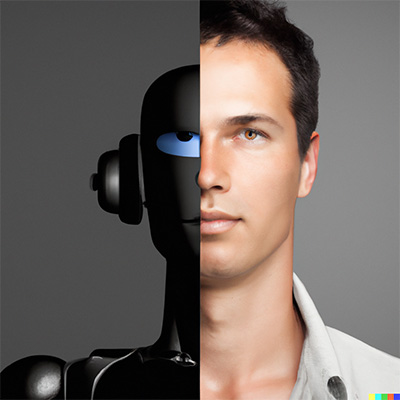
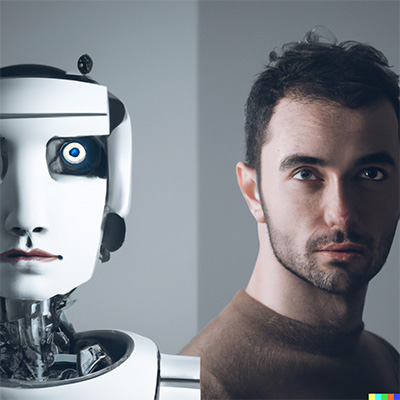
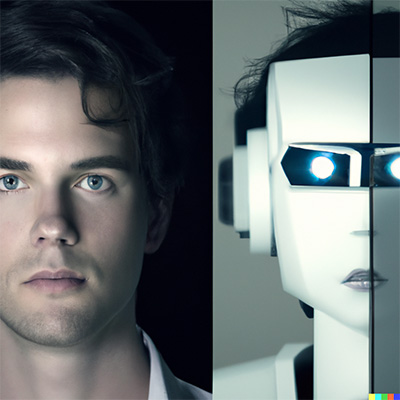
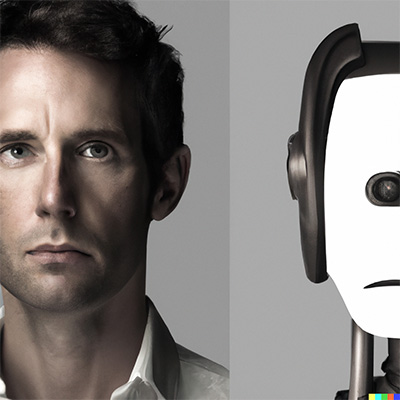
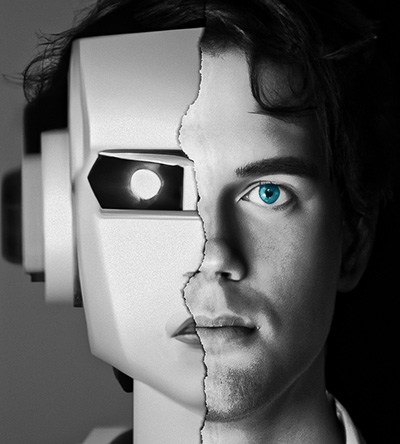
The results clearly are nowhere near spectacular, but I knew I had something that I could work with.
If you’re hoping AI is going to spit out perfect conceptual graphics, think again! Human manipulation is more important than ever. Super creepy though, right?
Idea Refinement & Iteration
Once you’ve generated a collection of design concepts, it’s time to refine and iterate. Review your concepts critically, seeking feedback from peers or stakeholders if possible.
I took my favorite of the generated faces, put my head down, and meticulously edited the photos; adjusting proportions and shadows, and stitching the pieces together to formulate a cohesive image.
Moments later, our AI Frankenstein was ready.

I knew my half-man-half-robot concept may not work for all audiences and internal stakeholders, so I made sure to pull a few more images that I felt may still hit with the same impact, each one getting a little crazier than the next.
With a Lonely Island-esque “Incredible Thoughts” montage running through my mind, I asked myself:
- What if the king of the jungle was actually king?
- What if someone took a photo of the photographer shooting the moon landing?
- What if my dog is actually smarter than me?
- What if energy-efficient lightbulbs literally impacted our environment?
While we may not be able to accurately answer these questions directly, with AI, your wildest thoughts can become a distorted sense of reality, and that was just the case when I began experimenting more thoroughly.
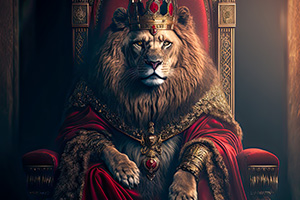


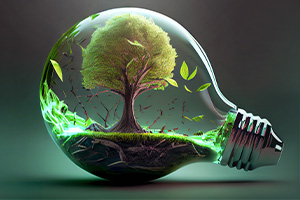
Consider your project’s objectives, brand identity, and target audience while assessing each concept’s strengths and weaknesses. Combine the most promising elements from different ideas, gradually narrowing down your options.
It’s essential to allow yourself to explore different directions, experimenting with typography, color palettes, imagery, and layout options. This phase encourages out-of-the-box thinking and enables you to generate a range of design concepts that capture the essence of the project.
Content Integration
While words crafted beautifully can elicit many emotions; when paired with graphics and artwork, they can work together to become a unified sensory experience that subconsciously impacts user decision-making.
The use of color isn’t just meant to make things look pretty, either. When you dive deeper into the theory of color it becomes apparent that it is a psychological technique that makes viewers feel certain emotions subconsciously.
The deep teal hues used throughout these concepts fall in line with our branding, but heavy shadows within the imagery give off a more mysterious, menacing feel.
Strategy, brainstorming, testing, and even failure are natural cycles that are often overlooked in the creative process but are essential to the overall success of any given campaign.
Translating these concepts into your digital marketing campaigns is a subtle tactic that could help your ads drive more conversions, but make sure you’re not straying too far from your typical brand palette!
Execution
With a refined concept in hand, it was time to bring everything to life and execute the design with precision.
I took the images and copy and began laying it out in the most compelling way possible, focusing on legibility, but also making sure the imagery was prominent and engaging.
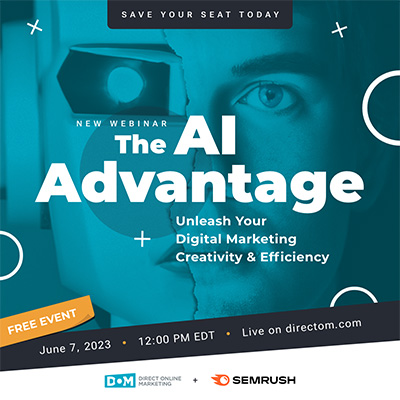
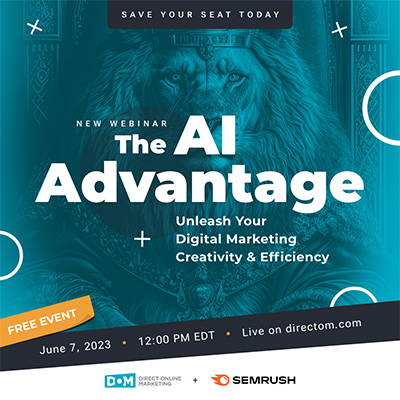
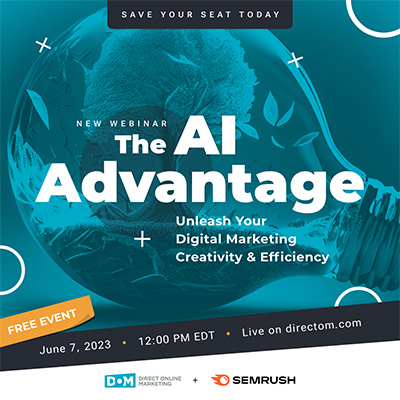
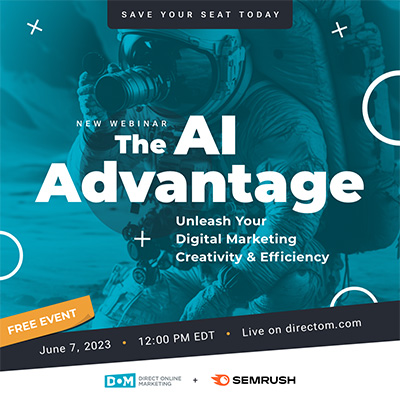
Whether you’re working with software like Adobe Creative Suite or other industry-standard tools, pay attention to details, maintain consistency, and ensure the design is optimized for its intended medium.
Fine-tuning typography, layout, color schemes, and other design elements until you reach a compelling and cohesive design that you’re proud to share with your team.
Ready to save your seat? Register here.
Collaboration, Feedback, & Testing
Design is a collaborative process, and seeking feedback is vital for refining and improving your work. Share your designs with team members or stakeholders and encourage constructive criticism.
Listen attentively to their input, understand their expectations, and incorporate their suggestions where appropriate. Effective communication and collaboration foster a deeper understanding of the project’s goals and ensure that the final design meets or exceeds expectations.
Designers, I know it’s difficult for your egos, but make sure you’re not putting all your eggs in one basket, either.
While personal preference will certainly come into play, trust the data to ensure you are pushing the creative that is driving the most conversions. The more you can test your designs against other variations, the better.
Finalization and Delivery
The last step of my creative process involve finalizing the design and preparing it for delivery.
Polish the details, double-check for any errors or inconsistencies, and ensure the design is optimized for different platforms or mediums.
The suite of deliverables for our webinars typically ranges anywhere from digital ads to social assets, email marketing materials, and even the deck for the presentation.
Create the necessary files, maintain an organized file structure, and keep backups to facilitate future revisions or updates.
I can’t stress enough how incredibly important it is that the creative translate cohesively across all deliverables to heighten brand awareness for these events.
When your creative pieces look good, it’s a bonafide first impression that helps to drive all of the other KPIs for a given campaign.
The creative process is a fascinating journey that combines strategy, creativity, and technical skills. By following the steps outlined above, you can approach your projects with the same clarity and confidence, delivering exceptional designs that captivate and communicate effectively.
Remember, the process is fluid, and each project may have its unique requirements. Embrace the iterative nature of design, stay open to collaboration, and continue to evolve and grow, embracing new technology and harnessing it to your advantage.
As the marketing world and generative AI continue to change daily, it’s important to remember that design quality will still reign supreme, but adapting to industry trends will only make your campaigns stronger.
Read more about how design and creative services can revitalize your digital marketing efforts.
